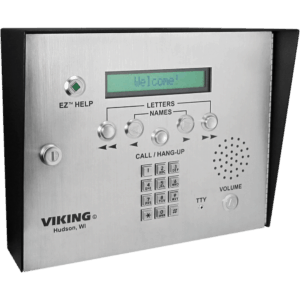A lot of apartment buildings have callboxes that will dial a tenant and allow the tenant to open the door by pressing a key sequence. I have had to use this to call myself before when I left my keys upstairs, or that time I lost my keys for a week (but thats another story). So what happens if you don’t have your phone or your keys? Or what about when you have guests that arrive early and you’re still in the shower, getting ready or can’t get to your phone in time?
In this example, the callbox dials Tropo instead of your phone, uses the built-in IVR to ask for a password. If the password is correct, it dials the dtmf digits to open the door and sends a text message to your phone alerting you of company.
var
result = ask(“The password is?”, {
choices: “sausages”
});
if(result.value == “sausages”){
say(“that is correct”);
say(“https://evolution.voxeo.com/library/audio/prompts/dtmf/Dtmf-9.wav”);
message(“A Guest has Arrived”, {
to:”+19192223323″,
network:”SMS”
});
}
else{
say(“there is a nice bench outside for you to sleep on”);
}


